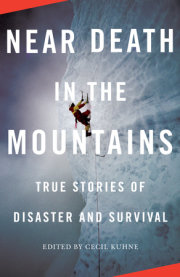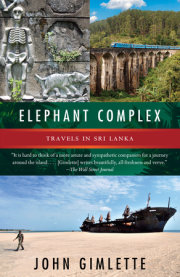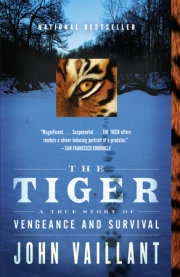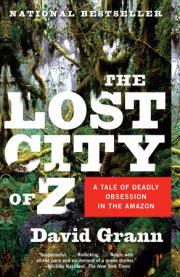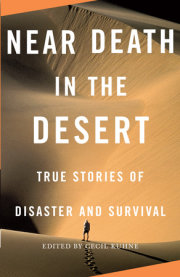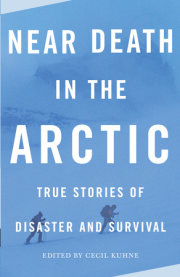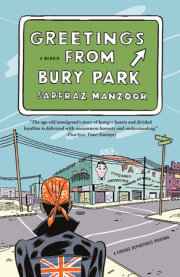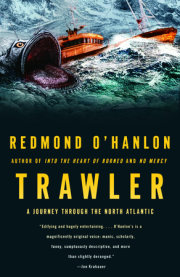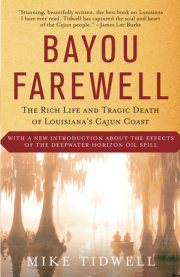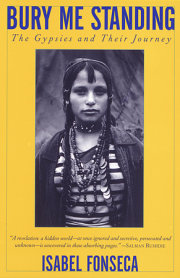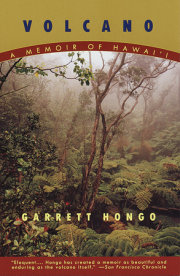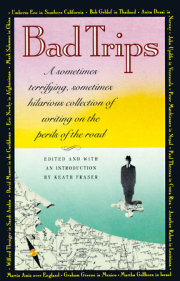The short-lived escape of World War II prisoners in order to scale a mountain is not your typical climbing tale. When Felice Benuzzi and two of his fellow Italian inmates fled a British POW camp in equatorial East Africa to ascend the 17,000-foot heights of Mount Kenya, they did so, they said, to escape the boredom of prison.
The suspense of this unusual journey was two-sided. Would the Italians successfully climb the mountain, and what would the prison guards do when they discovered their escape?
NO PICNIC ON MOUNT KENYA
FELICE BENUZZI
The Mountain
Our problem demanded consideration.
From where we were the north face of Batian looked formidable. We knew that the peak had been climbed, but wondered from which side the ascent had been made. Would it look more feasible from other aspects? Was there any standard route to the summit, and if so where was it? In order to answer these questions we should have to make a detour all round the base of the peak, but we did not know if this could be accomplished in one day and we had promised Enzo to be back soon after noon. Moreover, we had very little food left and Enzo's condition would not allow us to move the base camp nearer to the peak even if we had been able to locate a more promising route. We had not the faintest idea, of course, that there was a hut on the far side of Batian, a thousand feet higher than our base camp and at the very start of the standard route. For all these reasons we resolved to attempt the ascent from the north.
Having reached this decision, it remained to be seen whether a plan could be worked out in detail.
Two ridges buttress the mass of Batian on the north side, running left and right from the appalling Northey Glacier: the northeastern which is very long and unbelievably jagged and the northwestern which is shorter, steeper, and smoother on the whole but with a few very doubtful-looking pitches.
We agreed that if there was any possibility of scaling Batian from our side, this could only be done by bestriding, or traversing, the northwest ridge. This ridge has been climbed only once, under summer conditions by climbers of worldwide fame, Shipton and Tilman.
This being settled, we were faced by a further poser--how best to get on to the northwest ridge which has at its base a rock-tower with a roughly conical top, called by Shipton the Petit Gendarme.
Faced by the same problem, Shipton and Tilman abandoned the idea of an approach from the northern side and decided to make for the gap in the ridge behind the Petit Gendarme, attacking from the south. Their decision proved wise as they were successful. Had we known that these two English aces had declared that any attempt to approach the ridge from the north was hopeless, we should have made other plans; as things were, we proposed to try a route where Shipton and Tilman saw no hope. We decided in the end to traverse Dutton Peak and a black tooth behind it, reaching Petit Gendarme from a gap between "Black Tooth" and Petit Gendarme itself. It looked difficult but not impossible.
To get a closer view we decided to try out the first stage of the proposed route there and then, a plan which would have the advantage of giving us a practice climb.
We descended from the rocks to a large saddle just north of Point Peter, marked by a rock shaped like a molar tooth. As this saddle has no official name on Dutton's map and as it is mentioned many times in this story I shall call it, as we did, "Molar Saddle."
After eating a piece of chocolate we got round Point Peter on a scree and found an easy couloir, covered with hard snow. After half an hour of gentle climbing we reached a gap some fifty or sixty feet below the summit of Dutton Peak from which we looked down to Cesar Glacier. Had we known that we were so near the top of a named peak, and one not often climbed, we should have attempted to scale it; but as we did not know this and as our attention was wholly absorbed in studying our approach to Petit Gendarme, we were quite content to sit in the gap, dangling our feet above Cesar Glacier and eating another piece of chocolate in lieu of lunch.
We guessed that a traverse on the north face of Dutton Peak would bring us to the "Black Tooth" and to the very foot of Petit Gendarme. From thence, with our "eyes of faith" as Mummery used to say, we thought we could see a possibility of carrying on, although the difficulties seemed to increase toward the higher rocks.
As it was getting late, we left our lofty observatory and scrambled down until we reached the foot of Point Peter. With regret we decided not to make an attempt on it. Enzo would get anxious if we stayed out longer and Gui^n was getting worried about him.
On the scree below the rocks of Point Peter were the last lobelias, mostly dry and dead. We broke and bent some of them to mark the route when we should return to make our actual attempt on Batian.
At 2 p.m. we were back at the "Molar" pass whence we slid down a long scree to the upper tarn.
The colors of both tarns had changed, as we were now looking at them from a different angle, but the impression of complete peace and beauty was the same as from above.
After having drunk at the cool waters of the upper tarn, we walked along its shore toward the lower one.
"Dreamland," murmured Giuan, struck, as I was, by the sheer perfection of the landscape. Between the tarns and round about the lower one was a veritable flower garden made up of numerous tropical alpine species, many of them in bloom: groundsels with violet-gold inflorescences, giant groundsels, some of them with a plume-like crest of young mauve leaves, finger-like lobelias, mosses of all sorts and colors, cushions of ivory-white dwarf helichrysum, scabiosae, anemones, and many others which I do not know by name. An occasional blue-grey granite rock or a tuft of the long tussocky grass scattered among what appeared to be well-ordered flowerbeds added effectively to the harmony of the setting. Between the upper and the lower tarns, the newborn Nanyuki would be murmuring, and beneath its crystal clear water one could count the stones on the bottom.
I could not help recalling what I had read about the masterpieces of the wise gardeners of ancient China, said to have been experts at making miniature wonder-gardens. Again, a poor modern city dweller, I had been reminded of human craft and artificiality by an example of Nature's own supreme taste as shown in the selection and blending of color and forms.
This sheer loveliness of plant life had a background which at first sight contrasted strangely, so cold and harsh did it look, for between reddish rocks on the left and grey-blue walls on the right hung the snout of Cesar Glacier. The savage seracs forming a huge frozen waterfall ended in tongues and curls and embroideries of green shaded ice protruding from the main mass; but on looking again from the fairy garden in the foreground to the ice and rock-world behind, I soon found that this apparent discord merged in the placid mirror of the tarns, which reflected both glacier and flowers, blending colors, smoothing contrasts as an accord links and welds seemingly contrasting musical notes.
When we arrived back at the camp, we found that Enzo had been busy. He had doubled the ropes supporting the tent roof, dug a ditch all round the tent, and had made a cup for me of the empty jam tin, as I had mislaid my own mug. He had also carried out several minor works in his base camp to show that though ill, he was in no way a passenger but still an active member of the party.
The camp looked more comfortable, but unhappily we could do nothing about our greatest problem, that of food. Our rations being almost at an end, we divided the last tin but one of corned beef for our dinner, put the last drops of olive oil on it, and ate it with a few buttered biscuits. Following the advice of Giuan, we had reserved our butter to be eaten at the higher altitudes. He had been right, as now we really craved for it more than for any other food.
It is true that the quantity we ate left very much to be desired, but we comforted ourselves with the thought that our eyes had feasted on unforgettable scenes to compensate us for what our mouths had lacked.
The day was ending in a crescendo of beauty.
Beyond the real mountain of rock and ice appeared a phantom shape, a fairy mountain of those huge rounded heaps which the scientists call "cumuli" but which the Vene-tian painters of the seventeenth century used to call "heroic clouds." At first they were so dazzling white that the eye could not withstand the glare, but later, as the sun set behind a mist-bank overlying the Laikipia plateau, they slowly changed color, forming at last a crimson halo round the bloodred crags of Batian, while the rosy glaciers overhanging the invisible tarns faded slowly in sympathy.
February 3
This day, according to plan, was wholly devoted to rest and to final preparations for our attempt on Batian.
We got up late, having slept soundly for twelve hours on our grass palliasse in the narrow tent. The night had been so cold that the water in our bottles was still frozen solid at 9 a.m., though the bottles had been well covered and had been placed inside our rucksacks.
This ice was the best answer to a question I had put to myself: was it or was it not foolish to sleep without keeping a watch? As a rule, dangerous beasts like lions and leopards do not frequent very high altitudes, but there are exceptions.* As keeping watch without a fire was not possible I decided that it would be perfectly safe to trust to luck insofar as mountaineering felines were concerned.
In order to get boiling water for breakfast coffee and for shaving, we experimented again and again with dry lobelia and giant groundsel wood, but we could not get it to burn. The reason we could not is still a mystery to us, as all parties on Mount Kenya whose records I have read managed to get giant groundsel to burn. It might be that native porters are experts at making out a fire from anything, and every party which climbed before us was served by native porters.
Thus we ate two tiny biscuits with plenty of butter and meat extract, and shaved with cold water. But still we did not give up hope. If giant groundsels and lobelias did not like the idea of being burnt by us we should have to try other fuel, as Enzo reckoned that the alcohol left for the boiler would be just enough for breakfast on "Batian day." Therefore we burnt dry grass heaped between two boulders under our closed cooking pot. The grass curled, blackened, and smoked furiously without showing a flame, but it did develop heat. After more than an hour the water in the cooking pot started boiling, and for lunch we were able to have good tea with our last tin of corned beef.
Unexpectedly ambitious hopes of being able to cook "game" arose with our discovery of the rats. Actually the discovery had been made by Enzo but had not been credited by us.
This is what happened: as I was returning from washing and shaving at the ice-fringed brook, I found Enzo busy fastening our rucksacks halfway up the stems of giant groundsels near the tent. I commended him:
"It gives an impression of order and tidiness wholly worthy of a base camp commanded by you."
"There's nothing to laugh at," he answered. "There is a reason apart from order and tidiness and I bet you could not guess what it is."
I tried first "moisture," then "danger of a sudden snowfall, subsequent thaw, and deluge." Finally I guessed "animals" scoring from a shot in the dark. "Marmots" was my next guess and, at last, "rats."
Enzo answered with a mysterious "Might be."
"What do you mean by 'might be'? Either they are rats or they are something else, perhaps shrews or ground squirrels."
"I don't know what they are. They seem to be rats."
"Rats?" I repeated, wondering what rats could live on at this altitude. Enzo, misunderstanding my doubts and knowing that as a rule neither I nor Giuan took his remarks at face value, retorted:
"I don't see why you have to make such a fuss about it. Whatever the animals are, they live under the boulders."
Triumphantly, Giuan intervened, "How did you see them if they live under boulders?"
"When they come out, like they did yesterday when you were both away. They have dark-brown fur and a white stripe running from the neck to the base of the tail. The fur is very thick indeed."
"Fur-bearing animals then!" I said, still wondering if it was one of the yarns Enzo sometimes liked to spin, or if I could believe him.
"Exactly. I was wondering how many of them I should want to make a cape for my wife."
Giuan and I ended the interview with a hearty laugh and decided that Enzo was joking.
But after lunch when we were all three sitting quietly near the tent basking in the weak sun, Enzo sewing the flag, Giuan fastening a new cord to his ice axe, and I oiling my boots, Enzo suddenly pointed to the next boulder. It was a gesture of pride which reminded me of that made by a conjurer when he produces the white rabbit out of his silk hat, points at it, and remarks with theatrical modesty, "Voila!"
There it was, and Enzo, who had been proved right, smiled in a self-conscious manner. His description proved exact. The animal's tail was rat-like, not furry like a squirrel's. It sat on its hind legs, its forefeet close to its breast, and looked at us in the half-suspicious and half-concerned manner with which an old solicitor's clerk looks over his glasses at an intruder in his office.
It did not stay long and at the first movement it dashed off.
Anyhow, rats formed the main topic of our conversation in the afternoon and we left it to Enzo's well-proved ingenuity to discover the proper bait and to make a trap to catch some, not in order to make a cape for Enzo's wife--of which Giuan's and my wife would have been rightly envious--but merely to provide us with something to eat, as we were at the end of our rations.
Copyright © 2008 by Cecil Kuhne. All rights reserved. No part of this excerpt may be reproduced or reprinted without permission in writing from the publisher.


